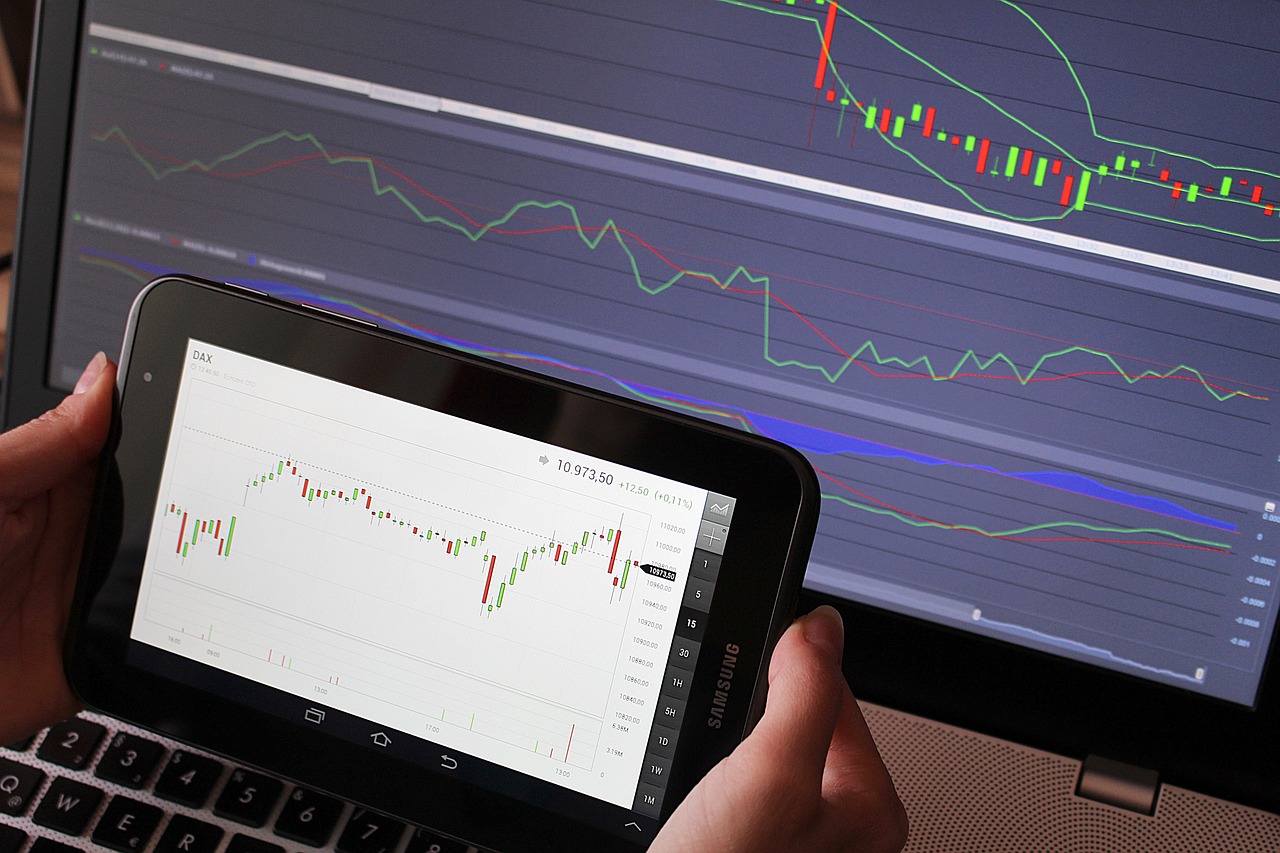What is CVD in trading? This comprehensive guide demystifies CVD, explaining its significance in the trading world. Discover the ins and outs of Clearing and Volatility Delays and how they impact trading strategies. Gain valuable insights to enhance your trading knowledge and decision-making.
Introduction
The world of trading is a captivating whirlwind of numbers, algorithms, and ceaseless anticipation for profitable outcomes. Yet, amidst this thrilling domain, there exists a rather intriguing term that resonates like a secret code: CVD. Now, close your eyes (well, not just yet, you’ll need to read further) and let me take you on a journey through the clandestine realms of CVD in trading. Prepare to uncover the hidden mysteries, embrace the adrenaline-fueled wonders, and maybe, just maybe, crack the code to unfathomable success. Welcome, fellow curious souls, to the enigmatic universe of CVD in trading.
1. Uncovering the Mysteries: Decoding the Enigma of CVD in Trading
So, you’ve delved into the fascinating world of trading, but have you ever wondered what CVD is and how it affects the trading market? Well, you’re in luck because today we’re going to unravel the mysteries and decode this enigma for you. Sit back, relax, and get ready for a mind-blowing journey!
But first things first, what on earth does CVD stand for?
CVD stands for “Cryptic Volatility Disorder.” Wait, what? Cryptic volatility? It may sound like something straight out of a science fiction movie, but in trading, it’s as real as it gets. Picture this – you’re monitoring the stock market, expecting smooth sailing, when suddenly prices start fluctuating wildly, without any apparent reason or pattern. That’s where CVD comes into play. It’s like a sneaky ninja, stealthily impacting the market’s stability.
Now that we know what CVD stands for, let’s dive deeper into the complexities surrounding it. What are the telltale signs of CVD? Keep your eyes peeled for the following key indicators:
- Extreme price volatility: Price swings can be so drastic that they resemble a rollercoaster ride.
- Sudden market reversals: The market goes haywire, abruptly changing direction, leaving traders scratching their heads.
- Unprecedented trading volume: Trading reaches unprecedented levels, making it difficult to distinguish genuine trends from manipulative actions.
These signs may seem daunting, but fear not! In the next section, we’ll equip you with the necessary tools to navigate through the treacherous waters of CVD and emerge victorious. Stay tuned!

2. The Clandestine World of CVD: Unveiling the Secrets Behind this Trading Jargon
Have you ever heard someone mention CVD in the midst of a conversation and found yourself nodding along without a clue about what it actually means? Don’t worry, you’re not alone! The clandestine world of CVD, also known as countervailing duty, can be quite puzzling for those unfamiliar with the trading jargon. But fear not, because we’re here to unravel the secrets behind this mysterious acronym and shed some light on its significance in international trade.
So, what exactly is CVD? Well, in the most basic terms, countervailing duty is a tariff or tax imposed on imported goods to counteract any unfair subsidies provided by the exporting government to its domestic industries. It acts as a safeguard mechanism to protect domestic businesses from foreign competitors who may gain an unfair advantage due to government support. Picture this scenario: Imagine you’re playing on a level playing field with your friends, only to find out that one of them has a hidden advantage. That’s where CVD steps in, aiming to restore fairness in the game of international trade.
3. Unmasking the Dark Horse: Demystifying CVD in Trading
Have you ever heard of the term “CVD” in trading? If not, don’t worry! CVD stands for Cumulative Volume Delta, a powerful tool that many traders use to gain an edge in the market. In this post, we’ll delve into the depths of CVD and unlock its secrets for you!
So, what exactly is Cumulative Volume Delta? Well, imagine you’re watching a football match, and the ball keeps changing possession between the teams. Similarly, in trading, there is a constant tug-of-war between buyers and sellers for control of the market. Cumulative Volume Delta is a way to keep track of the volume traded at the bid and ask prices for each bar or candlestick on a price chart.

- Why is CVD important?
CVD provides valuable insights into the market dynamics, showing whether there is more buying or selling pressure. By analyzing these cumulative volume imbalances, traders can anticipate potential reversals or continuations in the price trend.
- How can you interpret CVD?
A positive CVD value suggests that more volume has traded at the asking price, indicating bullish sentiment. Conversely, a negative CVD value indicates more volume at the bid price, suggesting bearish sentiment in the market. Traders often look for divergences between price and CVD to identify potential trading opportunities.
- How can you use CVD in your trading strategy?
By incorporating CVD analysis into your trading strategy, you can make more informed decisions. Understanding how volume and price interact can help you identify areas of strength or weakness in the market. Whether you’re a seasoned trader or just starting out, harnessing the power of CVD can give you an edge in the unpredictable world of trading!
4. A Deeper Dive into the Unknown: Exploring What CVD Truly Signifies in the Trading Universe
Curious minds have always thrived on unraveling the mysteries of the unknown, venturing into uncharted territory to discover treasures yet to be found. In the world of trading, a similar quest awaits all those who dare to embark on the journey to understand the enigma known as CVD. But what does CVD really mean? Let’s dive deeper into this intriguing concept and shed light on its significance within the vast trading universe.
**Unraveling the Meaning behind CVD**
CVD, or Chart Volatility Divergence, is a phenomenon that lies at the core of deciphering patterns and trends in the trading world. It is a confluence of intricate movements within a chart, magnifying the divergence between volatility signals and price action. But what does this all mean? Put simply, CVD allows traders to gain insights into the underlying forces that shape market volatility and make informed decisions based on this understanding. By recognizing the patterns within CVD, traders can transform enigmatic market behavior into a decipherable language that speaks volumes.
FAQ’s
What is CVD in Trading?
CVD, or Cumulative Volume Delta, is a powerful tool used in trading to provide insights into buyer and seller activity in the market. It helps traders understand the imbalances between buying and selling pressure, allowing them to make more informed trading decisions.
How does CVD work?
CVD works by analyzing the difference between the volume of buying and selling trades at each price level. It tracks the flow of money into and out of the market by comparing the volume of market orders executed at the bid (buy) and ask (sell) prices.
Why is CVD important in trading?
CVD is important because it helps traders identify the strength of market trends and potential reversals. By understanding the volume imbalances, traders can gain valuable insights into market sentiment, liquidity, and price action dynamics.
What are the advantages of using CVD?
- Visualization of volume imbalances: CVD provides traders with a clear visual representation of volume imbalances, making it easier to identify significant levels of buying or selling pressure.
- Early detection of trend reversals: By tracking the cumulative volume delta, traders can identify potential trend reversals before they are apparent in price action, giving them a competitive edge.
- Confirmation of market trends: CVD can confirm the strength and validity of market trends by showing if the volume supports the price movement.
- Identification of entry and exit points: CVD can help traders determine optimal entry and exit points by highlighting areas where strong buying or selling pressure is present.
How is CVD calculated?
CVD is calculated by subtracting the cumulative volume of selling trades from the cumulative volume of buying trades at each price level. The resulting values can be plotted on a chart to create visual representations.
Are there any drawbacks to using CVD?
While CVD is a valuable tool, it is important to note that it should not be solely relied upon for making trading decisions. Like any indicator, it has limitations and should be used in conjunction with other technical and fundamental analysis tools to enhance trading strategies.
Can CVD be applied to different trading instruments?
Yes, CVD can be applied to various trading instruments, including stocks, futures, commodities, and forex. Its effectiveness may vary depending on the market and timeframe being analyzed.
How can I incorporate CVD into my trading strategy?
To incorporate CVD into your trading strategy, consider following these steps:
- Learn how to interpret CVD charts and identify volume imbalances.
- Use CVD as a complementary tool alongside other technical analysis indicators.
- Apply CVD to different timeframes to gain a comprehensive view of the market.
- Backtest your strategy to assess the effectiveness of CVD in combination with your other trading tools.
- Continuously learn and adapt your approach based on market conditions and feedback from your trading experiences.
By incorporating CVD into your trading strategy, you can potentially enhance your ability to make more informed and profitable trading decisions.
Conclusion
Understanding CVD in trading is essential for traders to navigate the dynamic and ever-changing financial markets successfully. Clearing and Volatility Delays can significantly impact trade execution and outcomes. By staying informed, employing risk management techniques, and diversifying strategies, traders can mitigate the effects of CVD and make well-informed decisions in their trading endeavors.
















